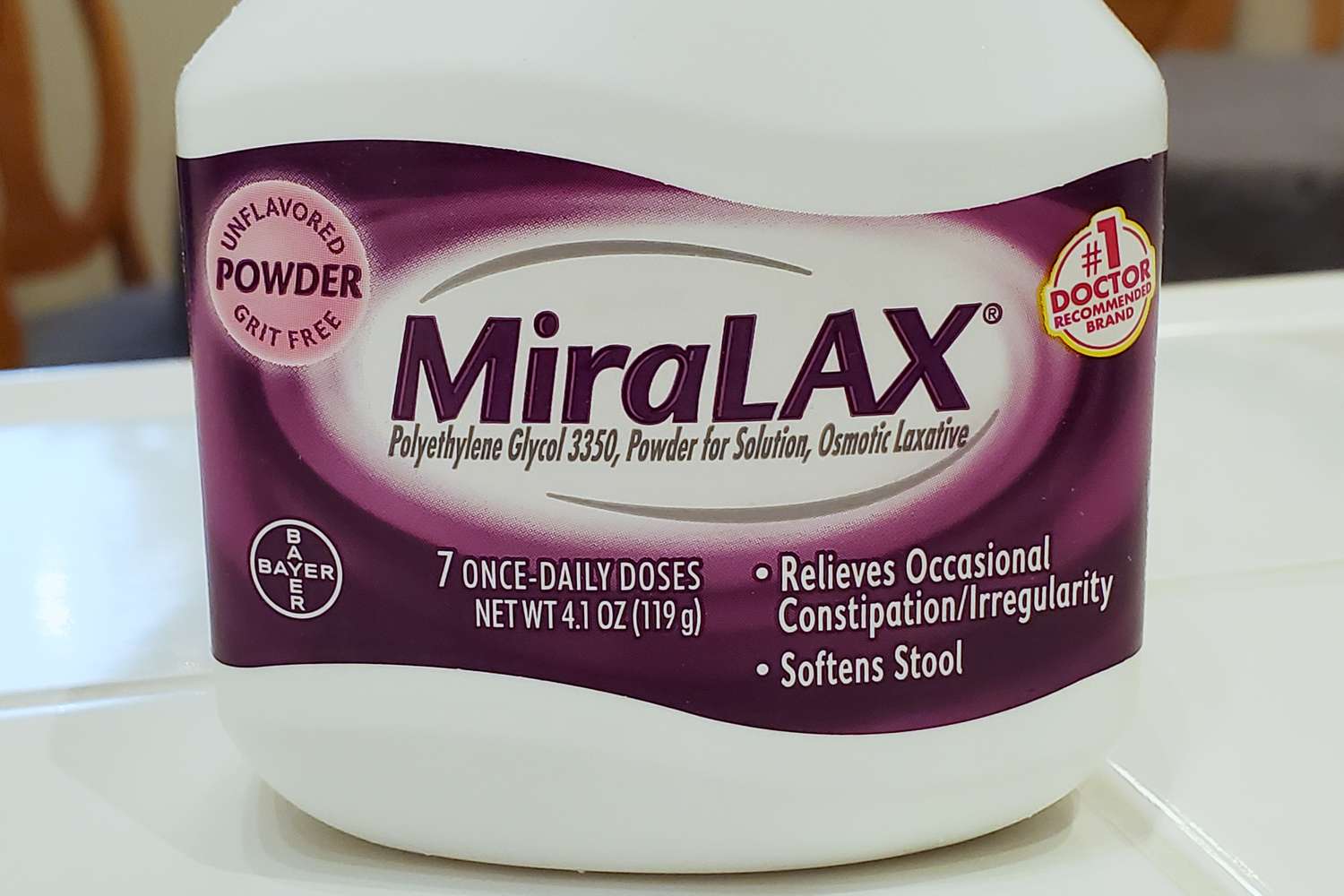Understanding Miralax’s Duration of Effect: From Relief to Elimination
Miralax (polyethylene glycol 3350), a popular over-the-counter medication, is known for its gentle and effective relief from constipation. Unlike stimulant laxatives, Miralax works differently, and understanding its duration in your system is crucial for managing expectations and achieving optimal results.
Miralax: A Gentle Approach to Constipation Relief
Constipation is a common digestive complaint characterized by infrequent or difficult bowel movements. Miralax belongs to a class of laxatives called osmotic laxatives. It works by drawing water into the colon, softening stool and promoting easier passage.
Miralax’s Timetable in Your System:
Miralax doesn’t work immediately like stimulant laxatives. Here’s a breakdown of its journey through your system:
- Ingestion: Once you take Miralax dissolved in a beverage, it travels through your digestive system without being absorbed by the body.
- Water Attraction: Miralax reaches the colon, where it attracts water into the stool. This process takes 1 to 2 days.
- Softened Stool: As water is drawn into the stool, it becomes softer and bulkier, making it easier to pass.
- Bowel Movement: The softened stool stimulates the colon’s natural contractions, leading to a bowel movement. This typically occurs within 1 to 3 days after taking Miralax.
- Elimination: After the bowel movement, any remaining Miralax is eliminated from your body in the stool.
Factors Affecting Miralax’s Action:
Several factors can influence how long it takes for Miralax to work in your system:
- Dosage: The recommended dose for adults is 17 grams (one rounded tablespoon) mixed in a beverage, taken once daily. Higher doses might lead to faster results, but consult your doctor before exceeding the recommended amount.
- Hydration: Proper hydration is crucial for Miralax’s effectiveness. Drinking plenty of fluids alongside Miralax helps draw water into the stool and facilitates its action.
- Severity of Constipation: In cases of severe constipation, it may take Miralax a little longer (up to 3 days) to produce a bowel movement.
- Individual Factors: Age, overall health, and existing digestive conditions can also influence how quickly Miralax works for you.
What to Expect After Taking Miralax:
After taking Miralax, you may not experience any immediate urge to have a bowel movement. This is normal. The key is to be patient and allow the medication time to work its gentle magic. You might experience softer stools within a day or two, followed by a bowel movement within 1 to 3 days.
Maximizing Miralax’s Effectiveness:
- Drink Plenty of Fluids: Aim for 8-10 glasses of water daily to help Miralax work optimally.
- Maintain a Regular Schedule: Take Miralax consistently, preferably at the same time each day, to regulate your bowel movements.
- Diet and Exercise: Include fiber-rich fruits, vegetables, and whole grains in your diet, and incorporate regular physical activity to promote bowel health.
When to Consult a Doctor:
- No Relief After a Week: If you haven’t experienced a bowel movement within a week of taking Miralax, consult your doctor.
- Severe Abdominal Pain: If you experience severe abdominal pain, bloating, or rectal bleeding, seek immediate medical attention.
- Chronic Constipation: If you experience frequent constipation (more than three times a week), consult your doctor to rule out any underlying medical conditions.
FAQ: Frequently Asked Questions About Miralax
- How long does Miralax stay in my system?
Miralax itself isn’t absorbed by the body and is eliminated in the stool within a day or two after it produces a bowel movement.
- Is it safe to take Miralax daily?
Miralax is generally safe for daily use for short-term constipation relief. However, consult your doctor for long-term use or if you have any underlying health conditions.
- Can Miralax cause diarrhea?
Taking more than the recommended dose of Miralax or not drinking enough fluids can lead to loose stools or diarrhea.
- What are some potential side effects of Miralax?
Common side effects of Miralax include gas, bloating, and stomach cramps. These are usually mild and temporary.
- Are there any interactions between Miralax and other medications?
Miralax can interact with certain medications. Always inform your doctor about all medications you’re taking before starting Miralax.
Alternative Treatments for Constipation:
While Miralax is a popular option, there are other approaches to managing constipation:
- Increased Fiber Intake: Aim for a diet rich in fruits, vegetables, and whole grains. These foods are natural sources of fiber, which helps bulk up stool and promote regular bowel movements.
- Exercise: Regular physical activity, like walking or swimming, can stimulate the digestive system and aid in constipation relief.
- Stool Softeners: Stool softeners work differently than laxatives. They work by drawing water into the stool, making it softer and easier to pass.
- Lifestyle Modifications: Managing stress, getting enough sleep, and establishing a regular bathroom routine can all contribute to improved bowel regularity.
Remember, constipation is a common complaint, and you’re not alone. By understanding your options and consulting your doctor when needed, you can find effective solutions for a healthier and more comfortable digestive system.






More Stories
Where to Watch USMNT vs Jamaica National Football Team
How I Met My Monster
How Should a Ring Fit